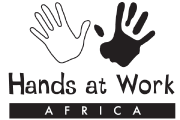As we remember the time leading up to Jesus’ death and resurrection, we meet daily to walk the road with Jesus in His last days, contemplating on the pain and suffering He went through for our salvation. This is a deep time of meditating on the sacrifice that Jesus made for us.
Jane Newsome, a long time friend of Hands at Work and current board member reflects on what Holy Week means to her in relation to her work as a former prison chaplain in the UK:
“It was the beginning of Holy Week and I was sitting on the floor of a prison chapel, making a banner for Easter with a group of prisoners. Some were “old lags” for whom prison was just a way of life, some were shocked to find themselves in prison for the first time, some were at the beginning of long prison sentences and would soon be transferred to “lifers” prisons.
As we sat, each of us working on our designated bit of the banner, which was to depict the crucifixion, one of the younger prisoners said: “I don’t know this story. What happened?”
I opened my mouth to respond, but before I could get any words out, the other prisoners started to tell him the story of Easter.
“Jesus was stitched up by one of his so called friends,” one of them said.
“Just when he needed his mates the most, they all ran off and left him,” another continued.
“He had to stand trial all by himself; there was no one in court to support him.”
“His mum stood by him though, she was there for him.”
They were connecting with God’s story, that is also our story.
God, in Jesus experienced the loneliness, the despair, the rejection, and betrayal that they had all been through, but, as one of the prisoners pointed out, “He hadn’t even done anything wrong.”
That experience on the floor of the prison chapel changed the way I approached Holy Week. I now see that it is only when I allow myself to fully engage with the story of Jesus’ betrayal, loneliness, despair and death, and let that story touch the experiences and feelings in my life that I would rather remained hidden, that I can truly celebrate and begin to understand what resurrection might mean.
Last year, David and I had the privilege of spending Holy Week and Easter at the Hub in South Africa. The daily reading in the chapel each evening, the Passover meal on the Thursday evening, and breakfast on George and Carolyn’s porch on Easter morning were all really powerful, but it was on Good Friday that I had my potter and clay moment; a moment when I was drawn into God’s story.
The different parts of the story of Jesus’ betrayal, trial, and death on Good Friday were depicted by different “Stations of the Cross” around the grounds of the Hub, each one created by members of the Hands community. So, for example, the trees at the edge of the sports field became the Garden of Gethsemane, the rocks near the chapel became the hill of Golgotha, and the chapel became the tomb where Jesus’ body lay. We were given the day to spend walking around the different stations, a time, to stick with the feelings of emptiness and loneliness in the face of failure and death.
The station that really spoke to me last year was one that dealt with Judas’s betrayal of Jesus. I have always found it very easy to think of Judas as the “bad guy” who was not like the other disciples and did not understand what Jesus was all about. The very imaginative way that this station was set up showed me that Judas was just like the other disciples, and just like me!
It was set up amongst the trees and undergrowth at the side of the road opposite the track down to the workshop. With my terror of snakes, the thought of walking along that overgrown track was not appealing! Nor was the invitation at the start of the track - to think of the things we do that cause us to betray friendship. Words and phrases such as “selfishness”, “hardness of heart”, “betrayal” and “disunity” were hanging from the trees and bushes. We were invited to take one that we felt we were guilty of, and place it in a basket at the end of the track, replacing it with a card to take away with the words “My Friend” written on it.
Because it was at the moment of his betrayal that Jesus turned to Judas and said “My Friend”.
Wow!
I have always loved the passage in St. John’s Gospel when Jesus says to his disciples, “I have called you friends.” Thinking of Jesus as a friend has been an important part of my Christian journey, but taking that card gave me a painful reminder of all the times I, like Judas, have betrayed or used Jesus. That painful reminder stayed with me all day Saturday, as we remembered Jesus’ body lying alone and lifeless in the tomb.
Watching the sunrise from George and Carolyn’s porch on Easter morning was a reminder that God is greater than all our betrayals, and He can breathe life into the driest of deserts. And for me, I started to understand that Jesus, my friend, is always ready to offer us another chance.


